As many are deciding whether to put out fungicide on their corn acres, it’s very important to correctly identify what leaf spots you might be seeing and sometimes knowing what it is not – is just as important. Continue reading
Category Archives: Corn
Perennial Vine Management in Corn and Soybean

There have been increasing issues with perennial vine infestations in soybean and corn fields in recent years. The two most commonly found species are honeyvine milkweed and trumpet creeper. Others that show up less frequently are hedge bindweed, burcumcumber and Carolina coralbead. Continue reading
Fungicide Considerations in Corn
Despite all the rain in West Tennessee, little foliar disease has been seen in corn fields; but as some of the earliest planted fields are at tassel – it is time to make decisions on fungicides.
Herbicide Stewardship Crunch Time
The weather forecast, if accurate, suggests next week will dry up enough where we all can get back in the field. Everyone will need to be running sprayers as weeds have not stopped growing. I know everyone will be in a rush, but please, please take the time to be good stewards and apply herbicides as directed by the labels. Continue reading
Corn Herbicide Cut-off Stages
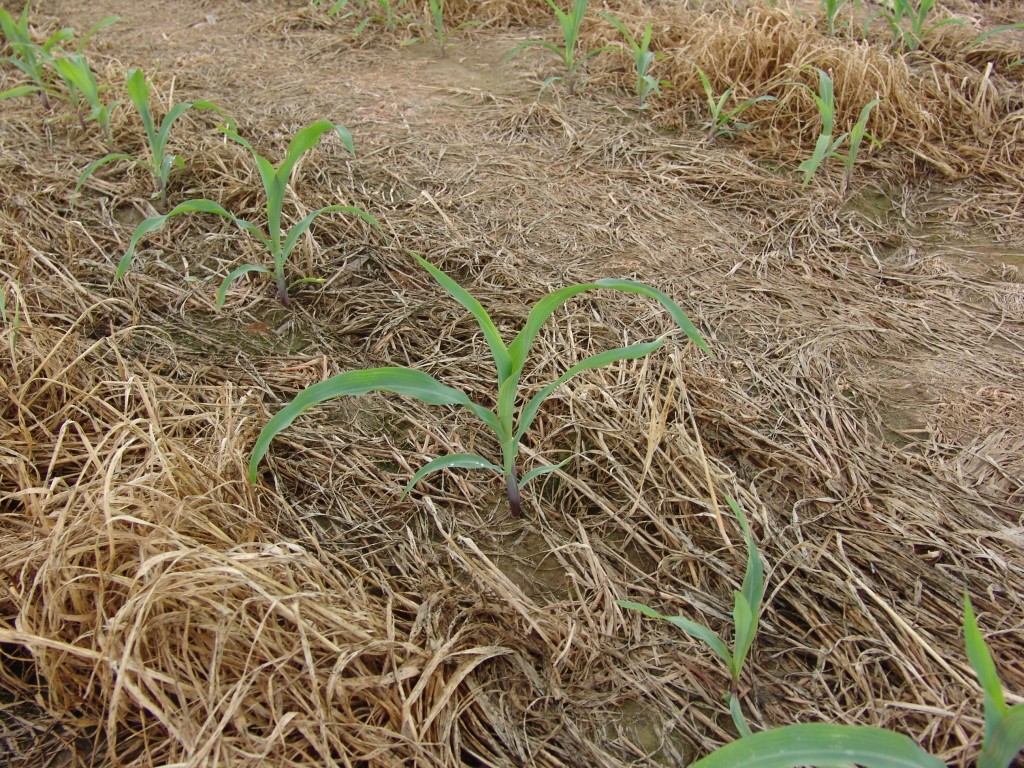
Due to little time and very few good spray days, some corn fields have yet to have their layby application. Corn is putting on a new leaf every 3 days with all the heat and water. Therefore, time is short before it will be too mature to apply many herbicides safely over the top. Continue reading
Stewardship of Herbicides is Crucial in June
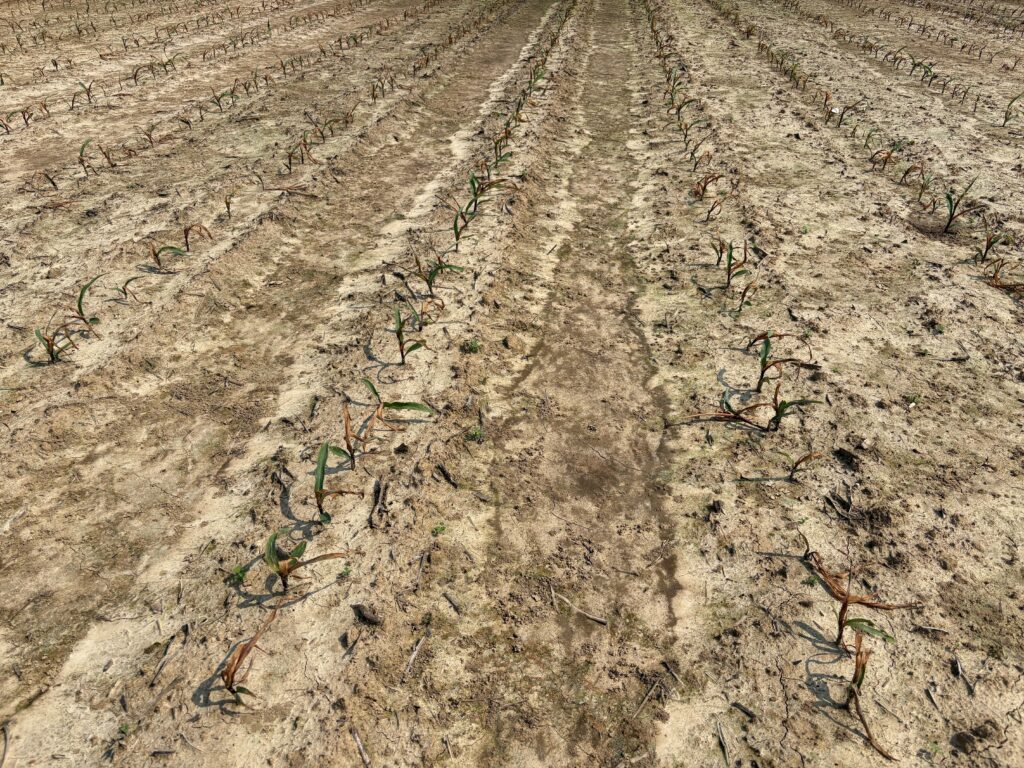
Crops injured by off-target herbicides have been too numerous for this early in the year! The most frequent problem has been corn injured by clethodim. There have been more reports and observations of this in the past 3 weeks than I can recall cumulative the past 20 years.
In my opinion, there are three reasons. First, with glyphosate no longer working on 5 grass species, clethodim is now used like never before as the “go to” for burndown. Second, with all the frequent rain there have been few days to spray causing applicators to rush. This in turn leads to higher probability of poor sprayer clean out and applications in less than ideal conditions. Third, small corn is highly susceptible to clethodim and it takes very little exposure to kill corn (Picture 1). It takes even less to cause bleaching and malformed whorls. Corn with these symptoms often will not die but may not produce an ear (Picture 2).
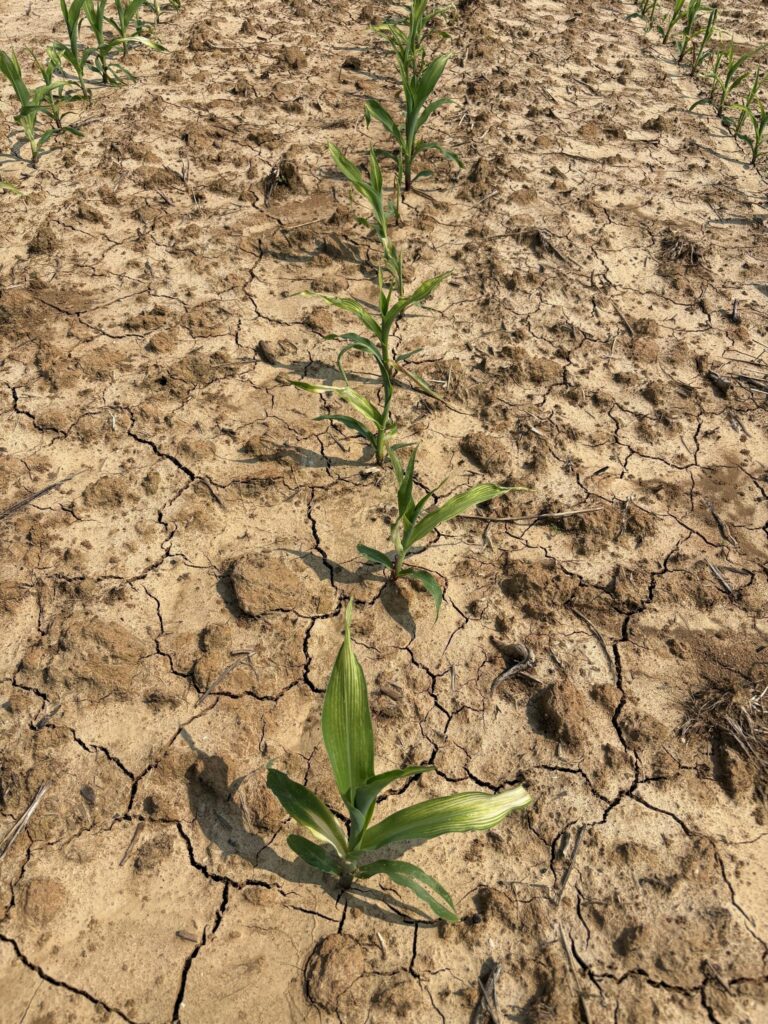
TDA has also gotten numerous complaints about 2,4-D drift. Most of this has been drift from pasture applications or burndowns.
Finally, a few dicamba drift issues have just recently been reported. The soybeans I have witnessed showing dicamba injury apparently were from burndown applications nearby.
I bring all this up to note that we are now in June. This is the most difficult month to keep herbicides in the targeted field as not only can they depart with wind but also through volatility with the higher temperatures this month.
Judging from the issues in May, we clearly need to up our game with respect to stewarding herbicide applications so the correct herbicide goes on the correct field. Remember the fundamentals of good herbicide stewardship: Wind speed, wind direction, applications with drift reduction agents added, sprayer boom height within 24” of the crop, etc.
Most importantly, use herbicides LABELED for use on the particular crop in the field. Only use Enlist One in Enlist crops. Never use the ester formulation of 2,4-D on pastures in the summer (Ester before Easter).
Finally, dicamba no longer has a label to be applied over Xtend crops and should not be used. Fortunately, Liberty Ultra in our research and also in fields I have walked has performed much better on pigweed so far this year than I would have anticipated. That new formulation looks to be providing more consistent Palmer amaranth control across various environmental conditions than the older 280 formulations.
Delayed Burndown: Strategy Burning Down Large Weeds
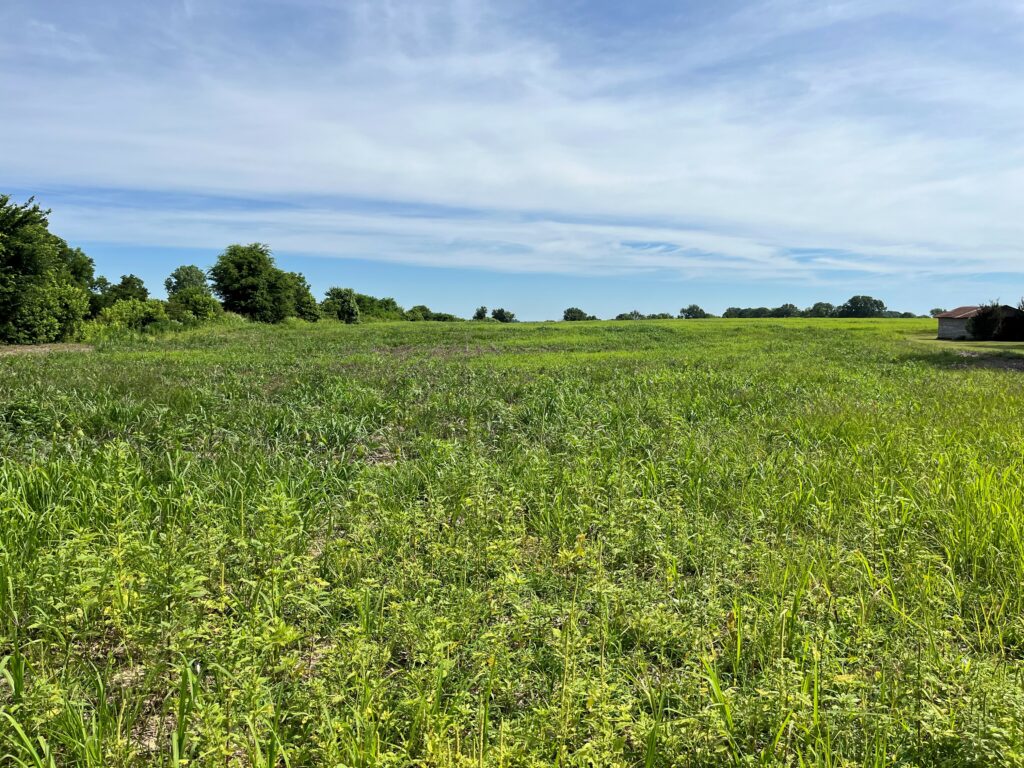
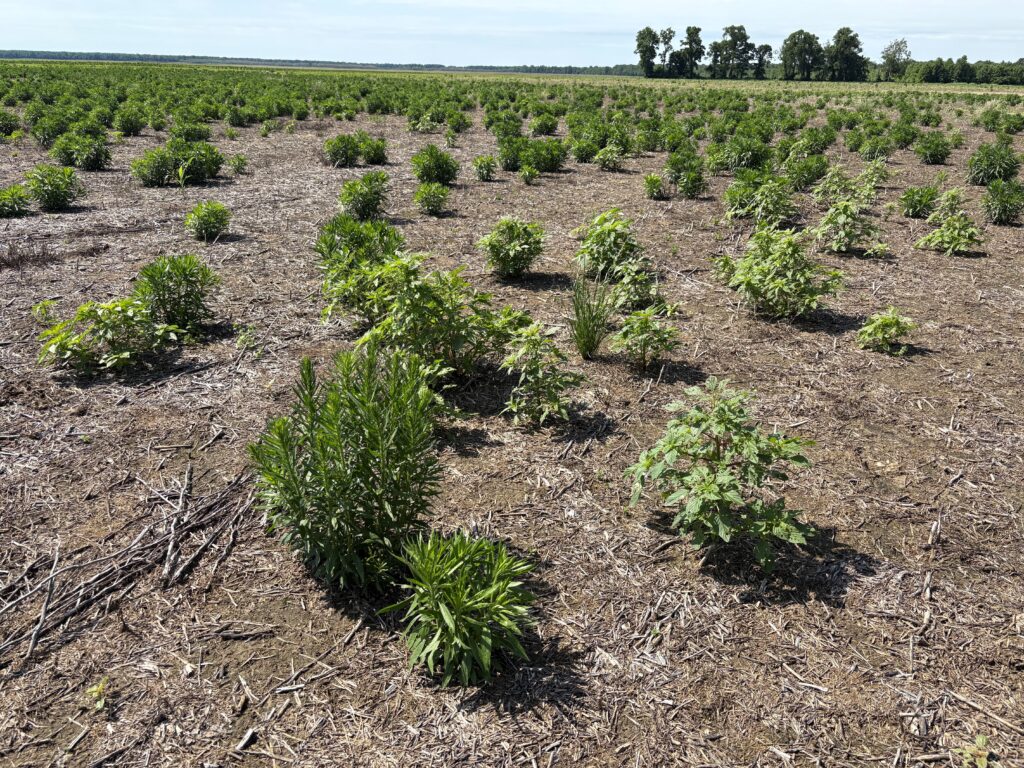
What began in March as a quick start to the planting season has with the many frequent rain events turned into a very slow struggle. The question of the hour is on how to burndown fields that are grown up messes before planting soybeans (Picture 1 and 2). There are strategies that can tackle fields that are heavily infested with 3’ tall goosegrass, Palmer amaranth, horseweed and volunteer corn. They typically require some kind of sequential application to be successful.
Paraquat, the usual “go to” for late spring burndown, will not control grasses with size, horseweed or even pigweed that has gotten so far out of hand. As such, the best approach is aggressive tillage. That unfortunately is not an option on our highly erodible fields.
In those cases, a tankmix of a high rate of Liberty plus clethodim is the best approach to try to control the grass weeds, horseweed and set the pigweed back. Then, if possible, a couple days later apply paraquat. This approach would have the best chance of success with herbicides.
In fields where the soybeans may emerge before a follow-up paraquat application could take place then Liberty tankmixed with Enlist should take out any escaped broadleaves. If grass seems to be recovering then apply Liberty plus clethodim.
Herbicide Corn Maturity Cutoffs
Due to little time and very few good spray days, some corn fields have yet to have their layby application. Corn is putting on a new leaf every 3 days with all the heat and water. Therefore, time is short before it will be too mature to apply many herbicides safely over the top.
How large can corn be before glyphosate could potentially cause injury? The glyphosate label states it can be applied up through the V8 corn growth stage. My experience has been if glyphosate is applied to corn larger than that it can at times cause ears to be barren. This phenomenon is difficult to predict ahead of time as it can vary due to maturity of the corn at application, hybrid and weather.
Crop stage and/or crop height is used to determine the cutoffs for a given herbicide. Often the label states the limits at whichever (crop stage or crop height) comes first. Crop stage can easily be done by counting the number of leaf collars that are fully exposed (Ex: 4 collars = 4 leaf) (Picture below). If tankmixing, cutoff is always determined by the most limiting factor.

Johnsongrass Escaping Glyphosate Burndown
| Postemergence Corn Herbicides | Crop Height Cutoff | Crop Stage Cutoff |
| Accent | 20 inches | 6 leaf |
| Acuron GT | 30 inches | 8 leaf |
| Atrazine (Bicep, Degree Xtra, Acuron, etc.) | 12 inches | – |
| Callisto* | 30 inches (without atrazine) | – |
| Capreno* | 20 inches | 7 leaf (without atrazine) |
| Corvus | 2 leaf | – |
| Dicamba (Clarity, etc.) | 8 inches (1 pt/A) or 36 inches (1/2 pt/A) |
5 leaf
– |
| Distinct | 24 inches | – |
| Glyphosate – RR corn only | 30 inches | 8 leaf |
| Halex GT | 30 inches | 8 leaf |
| Armezon/Impact | – | 8 leaf |
| Laudis | – | 8 leaf |
| Liberty – LL corn only | 24 inches | 7 leaf |
| Diflexx | 36 inches | 10 leaf |
| Realm Q | 20 inches | 7 leaf |
| Resicore REV | 24 inches | – |
| Resolve Q | 20 inches | 7 leaf |
| Roundup PM – RR corn only | – | 8 leaf |
| Shield Ex | 20 inches | 6 leaf |
| Status | 36 inches | 10 leaf |
| Steadfast Q | 20 inches | 7 leaf |
| Storen | – | 8 leaf |
| 2,4-D | 8 inches | – |
*Note that if atrazine is added to herbicides such as Callisto or Capreno for example, the cutoff would be reduced to 12 inches.

